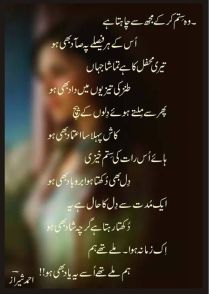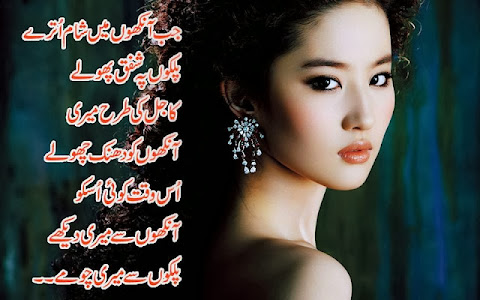English Poetry Sms Biography
Source(google.com.pk)English Romantic SMS For Girlfriend / Boyfriend
LEAVE A COMMENT
I call you honey
Because you’re so sweet
I call you angel
Because you’re so beautiful
I call you baby
Because you’re so huggable
I call you cutie
Because you’re the only one I
notice
I call you my love
Because you fill my heart
I call you sunshine
Because you light up my life
I’d love to hear you call me Only Mine.
Submitted By HumAyuN From Multan (+923216307893 Whatsapp)
ENGLISH ROMANTIC SMS FOR GIRLFRIENDENGLISH ROMANTIC SMS MESSAGESMOST ROMANTIC SMS IN ENGLISHPOETRY ENGLISH LOVEROMANTIC SMS IN ENGLISH 140 CHARACTERROMANTIC SMS IN ENGLISH 140 CHARACTER FOR GIRLFRIENDROMANTIC SMS IN ENGLISH FOR BOYFRIENDROMANTIC SMS IN ENGLISH FOR HUSBAND
ENGLISH POETRY SMS
Sleeping with Your partner crossing Your limits
3 COMMENTS
Sleeping with Your partner doesn’t always
means You are crossing Your limits.
Sometimes its simply means cuddling with
Your partner under one blanket.
Sometimes it means, keeping head on his
Shoulders.
Sometimes it means, just sharing a Bed.
Or just simply sharing A warm Feeling..!
You want to know what Real Love is..?
It’s waking up in the middle of night, for no
reason,
Shifting under the blanket and feeling the
heat of person next to You.
You turn around to see them in their most
peaceful, innocent and vulnerable state.
You kiss their face in most gentle manner,
so as not to wake them.
You turn back and there is a Sweet
priceless smile on Your Face.
You feel an arm wrapping around Your waist, and you know it doesn’t get any
better than this.
You can’t make your Relationship
strengthen with spending more time in Bed,
You can’t make Your Girl happy, by making
her satisfied.
You can’t make Yourself proud, By Fucking
Your Girl .
You have to keep that promises, which
You’ve given.
You have to say those magical words, and
prove it Every day – Every night.
Treating Your Girl right is much more
important than kissing her hardly – pushing
to wall.
Understanding her secret wishes is much
more important,
Joining her pieces of broken heart is much
more important than breaking her virginity.
Leaving her with beautiful memories, is much better than Leaving her in bed.
Long, Deep, Hard kisses doesn’t make a
Way for any relationship,
But Few roses, Magical Words, and True
promises makes a Beautiful Relationship. -
Without an doubt.
Spending all long nights in Bed won’t let
you come closer to Your partner,
Spending few Beautiful Moments – Holding
her hands, Making her smile. Matters a lot.
Because when You Love Truly, its
called’Making Love’, and not SEX.
True beauty of every Girl lies in the Way she
care For You,
What she Feels for You..
The way she is ready to sacrifice her
everything for Your Love.
The passion she shows for You.
You cant take her for granted, Just because
of the Simple reason, – She Loves You. The passion she shows for You.
You cant take her for granted, Just because
of the Simple reason, – She Loves You.
It’s really easy to find some one who can
give You a pleasure on Bed like no other.
But it’s really difficult finding that some one
who truly Loves you Like no other.. !
Submitted By HumAyuN From Multan (+923216307893 Whatsapp)
ENGLISH POETRY SMS
do not disturb 0n your heart
LEAVE A COMMENT
Being “SINGLE” Doesn’t
Necessarily Mean
You’re Available.
Sometimes You Have To
Put Up A Sign
That Says,
“Do Not Disturb”
0n Your Heart. . . ! =)
Submitted By HumAyuN From Multan (+923216307893 Whatsapp)
ENGLISH POETRY SMS
Maybe I am a self-sacrificing spirit
LEAVE A COMMENT
Maybe I am a self-sacrificing spirit
That represents the true pinnacle of lyrics
I hope you get my message
Before my words’ dissolves and fades away
I pray to God that you hear it
I’m looking for love
And no artificial substitutes
You can’t find love
If you looking for the wrong attributes
To tell you the truth
I can’t make love to you
If I am not in love with you
I know that I
Have a high sex drive
But that doesn’t mean I
Have to chase everything
That is feminine with legs
I built myself up too high
To sell myself short
For pointless gratification
I rather wait for love instead
Before I get inside of you
I rather get inside your head
You hungry for knowledge
And I want to make sure
That you are fed
I am careful how I prepare
The place that I lay my head
Because there is no telling
How soon will have to
Lay in that bed
I want to open your mind
Before I open your legs
I’m not looking for one night stands
I am looking for a queen
Who I can share the throne with
The one that will inherit my riches
And my kingdom
When we wed
Anything less is absurd and contradictory
And would lead to my misfortune instead
Submitted By HumAyuN From Multan (+923216307893 Whatsapp)
ENGLISH POETRY SMS
I Almost Lost This Day
LEAVE A COMMENT
I Almost Gave In
I Almost Lost This Day
Almost Got To Me Into The Air
My Hands Tossed
Almost Walked Away
Almost Cried
Almost Threw Caution Into The Wind
Happiness For Myself I Almost Denied
Almost…
Then…
I Felt A Brush Of Love Againt My Face
Wings Wrapped Around Me In A Warm Embrace
I Heard A Whisper Into My Ear….
Dont Giveup, I’m Rite Here
Submitted By HumAyuN From Multan (+923216307893 Whatsapp)
ENGLISH POETRY SMS
there was no one but
LEAVE A COMMENT
There Was No One But You
I Have Not Seen Any One Like You
Who Loved Me More Than Love
With Never Ending Care From You
I Began To Love You
With Hundreds Of Reasons
You Will Not Believe It
How Much I Need You ..
Neither I Can Explain
Nor I Can Show It
I Urge To Have It
Till Last I Breathe..
I Will Love You ..
You Will Remain Silent In My Heart
Let Me Stay There Also
In Your Heart ..Some Where..
I Want To Get Mingle
With Those Lovely Beats ..
Ur Melodious Voice Makes Me
Feel Great Since That Time
I Love To Hear It
Those Emotions.. Ever I Got
Which Brought Colours
To My Universe
Took Me Into Another World
That Happiness , Being Loved
Still I Want That More ..
Your Love .. Your Care ..
Yesss ,, I Want More ..
The More I Want Ur Love
I Got Much Crazy Than Before …
Submitted By HumAyuN From Multan (+923216307893 Whatsapp)
ENGLISH POETRY SMS
Hitler Disliked Smokers
LEAVE A COMMENT
Hitler disliked smokers
Eva Braun joined with Hitler in his study room.
What Eva studied moments before?
Why Hitler did not like smokers?
And the whole thing went unanswered
After the submarine submerged to Bariloche.
And who went by the street did not know
That could be a story being planted;
And who was born at that time
Could you believe the version a few years later.
The coal ash mustache made ??in history
Even after the cry of Otto Günsche
By finding the bodies on the couch.
Pumps Red Army troops
They arrived late at the chancellery gardens,
When dogs already poisoned, lying in the crater.
The bunkers were eventually taken by cigarette smoke.
Because Hitler did not like smokers.
Ricardo Mezavila (Brazil)
Submitted By HumAyuN From Multan (+923216307893 Whatsapp)
ENGLISH POETRY SMS
Dont Hurt Her Feelings SMS In English
LEAVE A COMMENT
Stop leading her on,
Her feelings aren’t a joke.
If you know she likes you more than a friend
then treat her the way you see her.
If you see her as a friend, then be a friend.
If you see her more than a friend
then do something about it.
But if you just want to play around because she’s “easy”,
and get her hopes up for something that will never happen,
then that’s low of you.
She’s not a game,
neither are her feelings for you!!
English Poetry Sms Sad Poetry In Urdu For Girls Pics In English For Boys SMS Images Punjabi Wallpapers For Boys in Urdu
English Poetry Sms Sad Poetry In Urdu For Girls Pics In English For Boys SMS Images Punjabi Wallpapers For Boys in Urdu
English Poetry Sms Sad Poetry In Urdu For Girls Pics In English For Boys SMS Images Punjabi Wallpapers For Boys in Urdu
English Poetry Sms Sad Poetry In Urdu For Girls Pics In English For Boys SMS Images Punjabi Wallpapers For Boys in Urdu

English Poetry Sms Sad Poetry In Urdu For Girls Pics In English For Boys SMS Images Punjabi Wallpapers For Boys in Urdu
English Poetry Sms Sad Poetry In Urdu For Girls Pics In English For Boys SMS Images Punjabi Wallpapers For Boys in Urdu
English Poetry Sms Sad Poetry In Urdu For Girls Pics In English For Boys SMS Images Punjabi Wallpapers For Boys in Urdu
English Poetry Sms Sad Poetry In Urdu For Girls Pics In English For Boys SMS Images Punjabi Wallpapers For Boys in Urdu
English Poetry Sms Sad Poetry In Urdu For Girls Pics In English For Boys SMS Images Punjabi Wallpapers For Boys in Urdu











.jpg)




